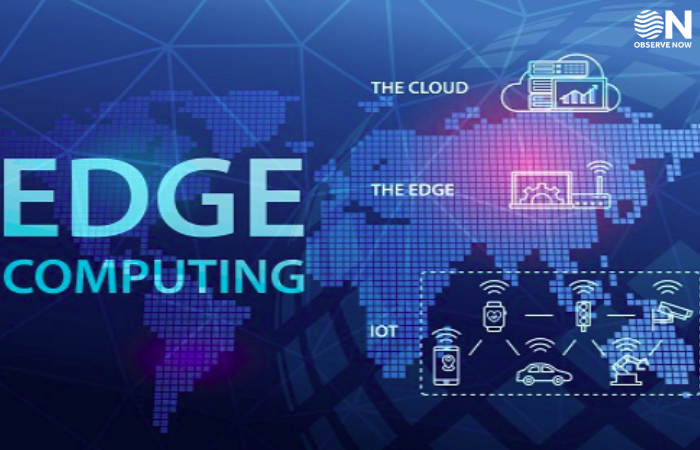Edge Computing Becomes Essential for Indian Enterprises in AI and 5G Era

As India accelerates its digital transformation journey, edge computing is fast emerging as a game-changing force across industries. Moving beyond traditional centralized data centers, edge computing brings processing capabilities closer to where data is actually generated—on factory floors, in hospital wards, telecom towers, retail outlets, or embedded devices. The result? dramatically reduced latency, real-time analytics, enhanced data privacy, and substantial bandwidth savings, critical enablers for the AI, IoT, and 5G ecosystem now taking root across the country.
India’s edge computing market is entering a phase of hyper-acceleration. According to a report by IMARC Group, the Indian edge computing market reached USD 1.6 billion in 2024 and is projected to grow at a compound annual growth rate (CAGR) of 43.5% from 2024 to 2033. In comparison, global edge computing is growing at around 30% CAGR—underscoring India’s rapid adoption rate. This growth is fueled by enterprise demand for low-latency infrastructure and the convergence of AI, IoT, and 5G rollouts. The edge market’s expansion is also supported by increasing investments from hyperscalers and telecom providers, with over 450 edge data centers expected to be operational across India by 2026, according to Research and Markets.
The synergy between 5G and edge is another major catalyst. As per a MarketsandMarkets forecast, India’s 5G edge computing segment alone is expected to grow at a staggering CAGR of nearly 64% between 2025 and 2030. Telecom majors are responding in kind: Airtel has already deployed over 120 edge data centers with a combined 120+ petabytes of storage capacity, while Reliance Jio has rolled out cloud-native 5G cores in over 50 locations. These infrastructure moves are enabling real-time AI-driven services across sectors such as smart manufacturing, healthcare, and logistics. Additionally, a NASSCOM report highlights that 46% of Indian digital-native startups are planning edge deployments in the next 12–18 months, primarily for latency-sensitive AI applications and compliance with India’s evolving data localization regulations.
This upward trajectory is clearly visible across India Inc. Across financial institutions, hospitals, factories, and logistics hubs, edge-enabled AI systems are powering faster decision-making, supporting localized compliance, and helping organizations respond instantly to operational changes.
Take telecom, for instance. Bharti Airtel has established a network of over 120 edge data centers across the country, supporting enterprise clients with high-speed storage and compute capabilities. Its partnership with IBM, focused on AI-powered enterprise solutions at the edge, is already producing results in sectors like automotive and manufacturing. Similarly, Reliance Jio’s implementation of cloud-native 5G cores across 50+ sites has enabled real-time IoT applications in areas ranging from smart education to connected healthcare.
In the manufacturing sector, Tata Steel is using edge computing and IoT to enable predictive maintenance in its plants, thereby reducing unplanned downtime. Maruti Suzuki’s recent collaboration with Airtel and IBM is leveraging edge-based video analytics and robotics for precision quality inspections—a move that is transforming how India’s largest car manufacturer maintains efficiency on its assembly lines.
Healthcare, too, is experiencing an edge-driven overhaul. Apollo Hospitals has started deploying AI at the edge to enhance diagnostic accuracy in remote settings—particularly useful in tier 2 and tier 3 cities where network infrastructure is limited. The ability to process medical images and patient vitals in real time, without relying on centralized data centers, is proving to be a lifesaver.
Even the BFSI sector, typically cautious in adopting emerging tech, is beginning to explore use cases. ICICI Bank and HDFC Bank are testing edge-based fraud detection systems that analyze transactions and customer behavior at the branch level to offer hyper-personalized services. These developments not only improve security but also drastically cut down response times in high-stakes environments.
The momentum isn’t limited to large enterprises. A recent NASSCOM study revealed that nearly 46% of digital-native startups in India are planning edge deployments within the next 18 months. Their primary motivations: scalability, cost optimization, and the need to comply with India’s increasingly stringent data sovereignty norms. For small and medium businesses in logistics, retail, and quick-service restaurants, edge technology is being used to monitor supply chains in real time and offer faster, more localized customer experiences.
Next-generation applications are also gaining traction. Indian firms are beginning to experiment with serverless edge environments to scale rapidly without managing complex infrastructure. Edge-native databases are being explored to support autonomous AI agents and mission-critical operations—such as fleet tracking in logistics or drone-based inspections in infrastructure.
In mission-critical sectors like manufacturing, smart grids, and telehealth, latency is not a luxury, it’s a deal-breaker. Edge computing is proving essential in keeping systems running with near-zero delay. Whether it’s a smart factory using robotic vision systems or a hospital monitoring ICU patients in real time, the edge is where the real action happens.
As India rolls out 5G at scale and accelerates its ambitions in AI and digital infrastructure, edge computing will be the foundational layer binding it all together. From enabling smart cities and digital agriculture to powering autonomous machines and personalized healthcare, edge is no longer a supporting actor—it’s taking center stage in India’s digital growth story.
















